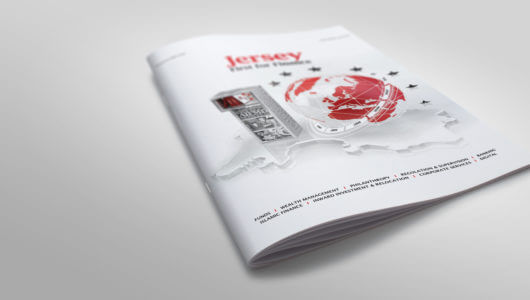Regulation had failed to prevent or curtail the financial crisis. So began a decade of regulatory reform, predominantly aimed at safeguarding the banking sector from another crisis and tax payers from further bail outs.
Increasing regulatory capital
The first step was increasing the level of regulatory capital that banks are required to hold to give a greater buffer against local and global risks.
Supported by other prudential requirements including stress testing, this has had a positive effect on the resilience of banks. The last results of the Bank of England’s stress testing for UK banks announced in November 2017, for the first time resulted in no bank being required to strengthen its capital position as a consequence of the stress test, which had simulated simultaneous recessions in the UK and global economies, large falls in asset process and misconduct costs. Similarly, the results of the European Banking Authority’s stress tests in 2017 demonstrate the resilience of the EU banking sector as a whole due to significant capital raising.
Jersey’s banking sector has seen similar capital improvements for both Jersey branches of UK and EU incorporated banks as a consequence of these international developments, as well as for Jersey incorporated banks. From 2007 to 2017 the regulatory capital of Jersey incorporated banks as a percentage of risk weighted assets (RAR) increased from 13.5% to 15.6% and capital and reserves as a percentage of total assets (leverage ratios) increased from 4.6% to 6.6%.
Ring-fencing
Ring-fencing is another UK regulatory response to the global financial crisis aimed at improving the resilience of banks. The deadline of 1 January 2019 is fast approaching for UK banks to divide their ring-fenced banking business (predominantly retail and SME business deposits and simple offerings) from their non-ring-fenced business (including business in Jersey and the other Crown Dependencies).
Whilst this may be challenging, it is generating local opportunities. Last year one local bank announced the creation of up to 120 new jobs, attributable in part to the development of its non-ring-fenced operations in the Crown Dependencies. Other opportunities include more profitable use of capital sometimes instead of upstreaming models and de-risking and associated sales of non-core banking business, such as trust company business.
Ring-fencing is being achieved by a variety of means including statutory banking transfer schemes. The Banking Business (Jersey) Law 1991 allows Jersey banking business to be transferred from one licensed bank (whether a subsidiary or branch) to another by means of a court-sanctioned scheme similar to UK transfers under Part 7 FSMA.
Banking schemes
When Standard Chartered consolidated its two Jersey banking entities (Standard Chartered (Jersey) Limited and Standard Chartered Bank, Jersey branch) into a single Jersey operating platform in September 2013, it used the Banking Law in a novel way to effect the transfer of both its banking and investment business. The Royal Court of Jersey confirmed in Re Standard Chartered (Jersey) Limited [2013] JRC172 its jurisdiction to transfer investment business alongside banking business under the scheme in appropriate cases.
Since then in Jersey banking schemes have been used by other banking and fiduciary groups to transfer not only investment business but also funds services, general insurance mediation, money services and other current and historic regulated business alongside banking business. Thus banking transfer schemes are very flexible. They can also be used to separate banking business from other business (such as trust company business) whilst minimising the potential impact on clients.
Key procedural steps include:
- two court hearings, one being a directions hearing initially for derogations from client notices and subsequently a second hearing, to consider sanctioning the scheme;
- publication and distribution of notices to clients and members of the transferor and transferee (unless derogations have been obtained) including a summary of the scheme;
- obtaining an auditor’s report on the terms and likely effects of the scheme on transferring clients; and
- an opportunity for any interested parties including the regulators, clients, employees and creditors to object to the scheme on the basis that they would be prejudiced by the carrying out of the scheme.
The main legal documents required include the scheme document itself; an independent auditor’s report; a summary of the scheme; legal notices for the Jersey Gazette; client, employee, member and creditor notifications (subject to court derogations); the court application and various affidavits.
In each of the recent cases, the Court sanctioned the transfer of banking business and other regulated business from local subsidiaries to the existing Jersey branches of other group entities and provided helpful guidance on the principles to be applied, drawing on the insurance case of Re AXA Equity and Law Life Assurance Society and AXA Sun Life Plc [2001] 1 All ER (Comm) 1010. In summary, as well as meeting required formalities, these include:
- the absolute discretion of the Court must be exercised by giving due recognition to the commercial judgment entrusted by the company’s constitution to its directors;
- the Court is concerned whether an interested party or group (including customers, employees and creditors) will be adversely affected by the scheme;
- the Court will pay close attention to the views of the regulator;
- the scheme, whilst being fair, does not have to be the best possible scheme in the Court’s view as that is a matter for the directors; and
- the details of the scheme are not a matter for the Court provided the scheme as a whole is fair.
A number of matters could be taken into account in assessing the fairness of the scheme overall, including the financial standing of the transferee and the operational impact of the scheme on clients.
Thus this latest round of bank restructuring driven by ring-fencing is continuing the general trend away from the holding of multiple banking licences towards consolidation into a single local operation. Consequently – and in line with other offshore centres, the number of banks licenced in Jersey has fallen from 48 in September 2007 to 27 in September 2017, although the value of deposits remains impressive at over £111 billion.
Recovery and resolution
The financial crisis also exposed the banks’ and regulators’ lack of preparedness and powers to quickly implement plans for recovery and resolution of failing banks. In the years that followed recovery and resolution legislation and compulsory planning, including at European and national level, evolved to address this omission. The aim is not only at ensuring continuity of critical banking functions, preserving financial stability and protecting public funds but at protecting covered depositors and clients’ assets.
Another notable feature is the use of the bail in tool (among various other tools) to minimise the risk of tax payers carrying the costs of rescuing or resolving a failing bank by requiring, for example, creditors to swap their debt for equity. Thus the movement from bail out to bail in has begun.
The States of Jersey has passed the Bank (Recovery and Resolution) (Jersey) Law, 2017 with the intention of bringing Jersey into line with these international developments. The Jersey law closely follows the European Union’s Bank Recovery and Resolution Directive 2014/59/EU and the UK’s Banking Act 2009. Once in force later this year, it will ensure that Jersey can take action itself or assist a foreign jurisdiction to rescue a Jersey branch or subsidiary in difficulties and introduce a special winding up procedure for failing banks.
It might seem like a long period of relentless regulatory developments for banks and regulators alike. No doubt over the next decade regulation of the banking sector will continue to evolve, even if precise developments are currently difficult to predict with Brexit on the horizon.
Yet one thing is certain. Banks are now much better placed to withstand national and global shocks than they were a decade ago.
Wendy Benjamin is a Partner at Appleby and Group Head of the Corporate department in Jersey, with managerial responsibilities for the Guernsey office.
She specialises in banking, corporate and commercial law and has an excellent reputation in intellectual property, IT and data protection.
As well as working regularly with top tier UK and US law firms on cross-border transactions and restructuring and insolvency work, Wendy’s client base encompasses significant financial institutions, public bodies, international and local companies across the three Crown Dependencies of Guernsey, Isle of Man and Jersey.

